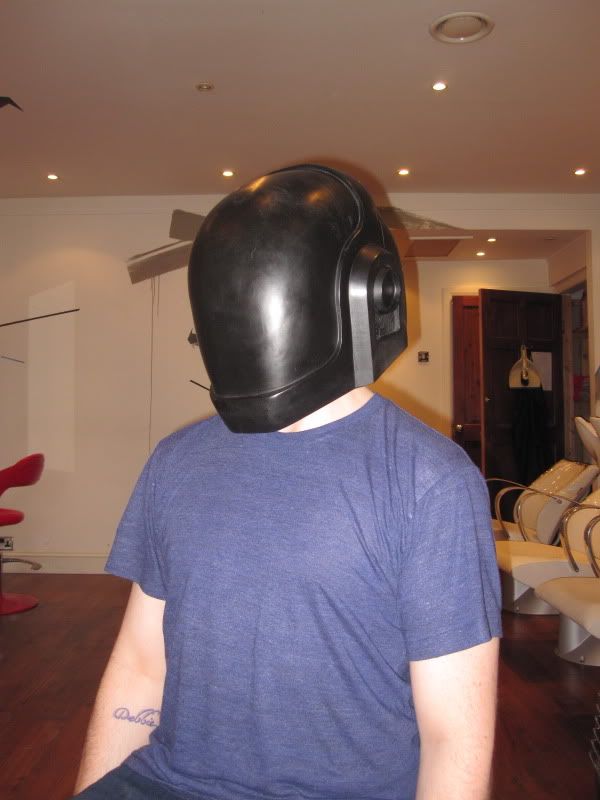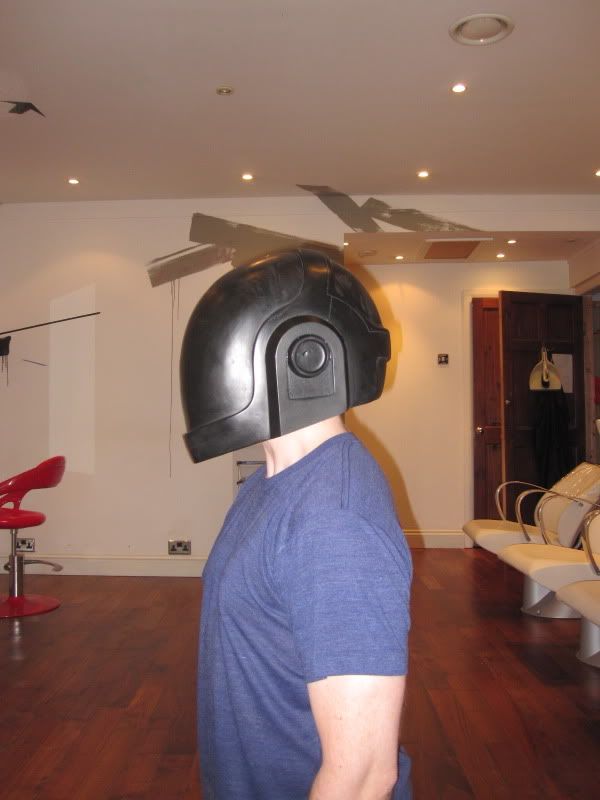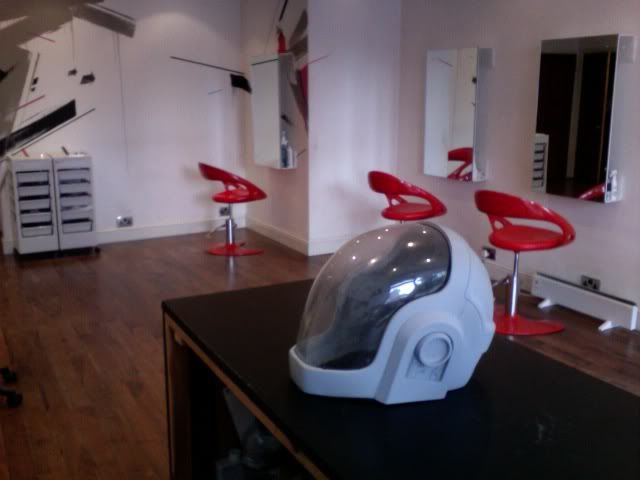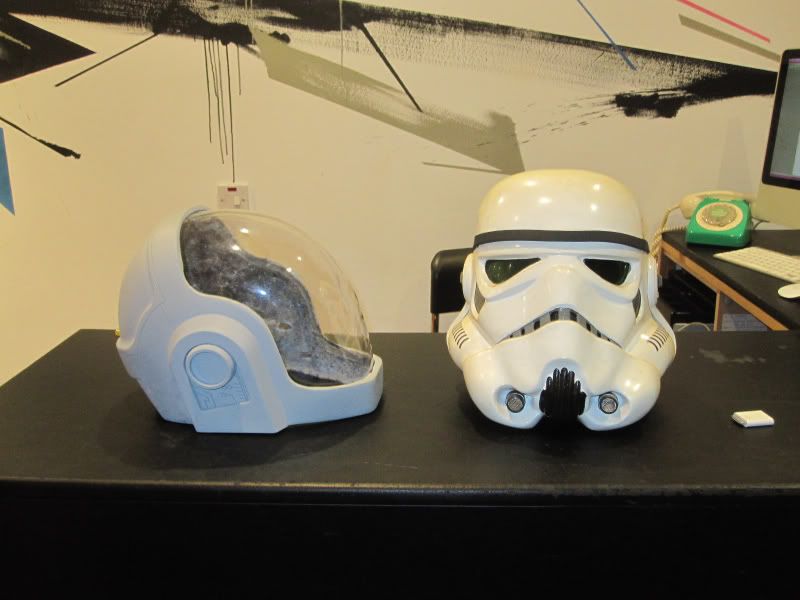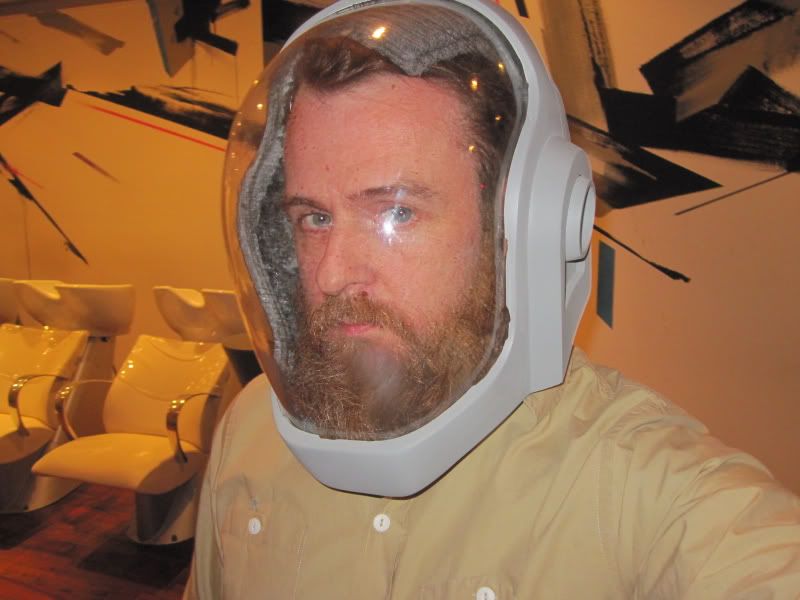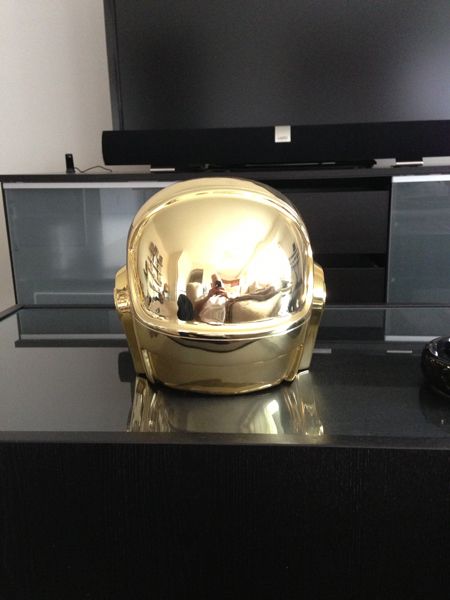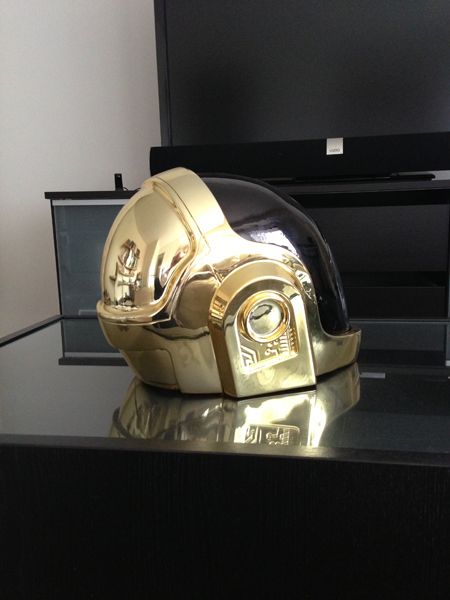Well it's been a while since my last post but i have some progress to share now , so here it is.
I managed to get to use a good vac former at the local art school and finally got some proper visor pulls done. The new pull visor fitted perfectly into the inside of the helmet.
Here i used the cutting disc on a dremel to scoop out the Onyx and cut a channel for the lip of the visor to sit into.
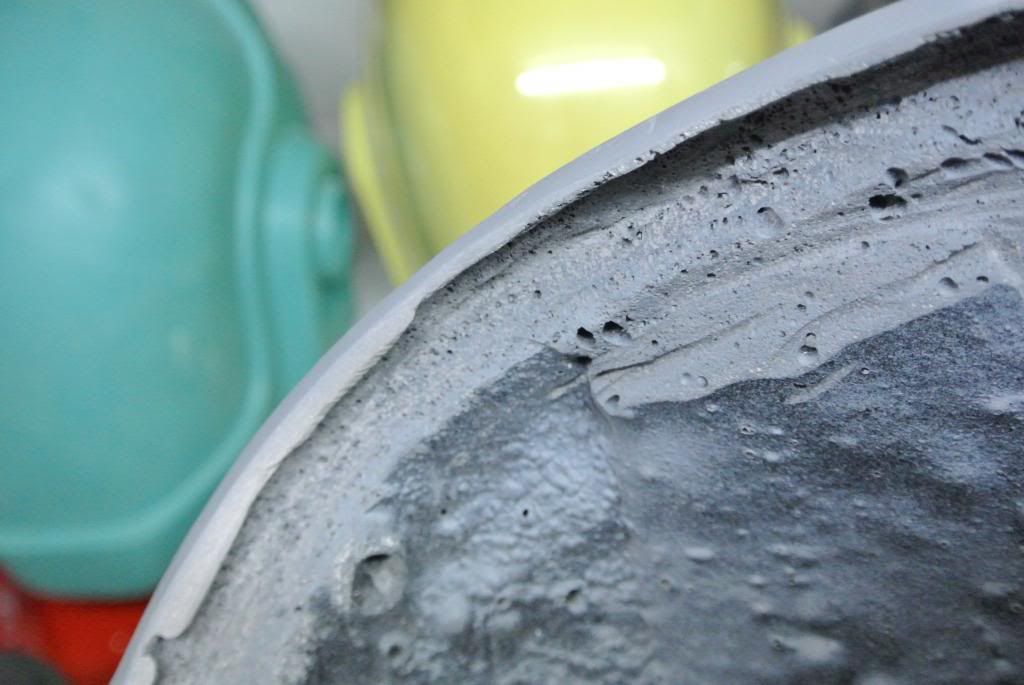
I trimmed the lip of the visor, inserted it into the helmet and used a marker pen to mark on the inside of the helmet to mark where the Visor wasn't meeting as flush as it could be so i could grind that part down and make more room. It was a process of trim some helmet/trim some visor until it fitted properly
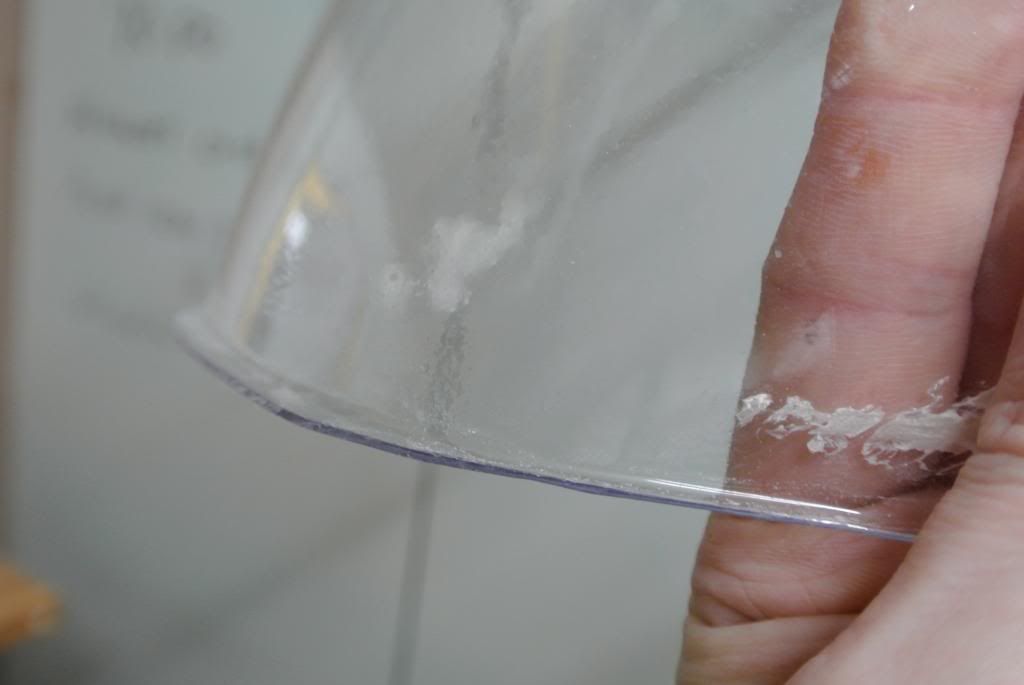
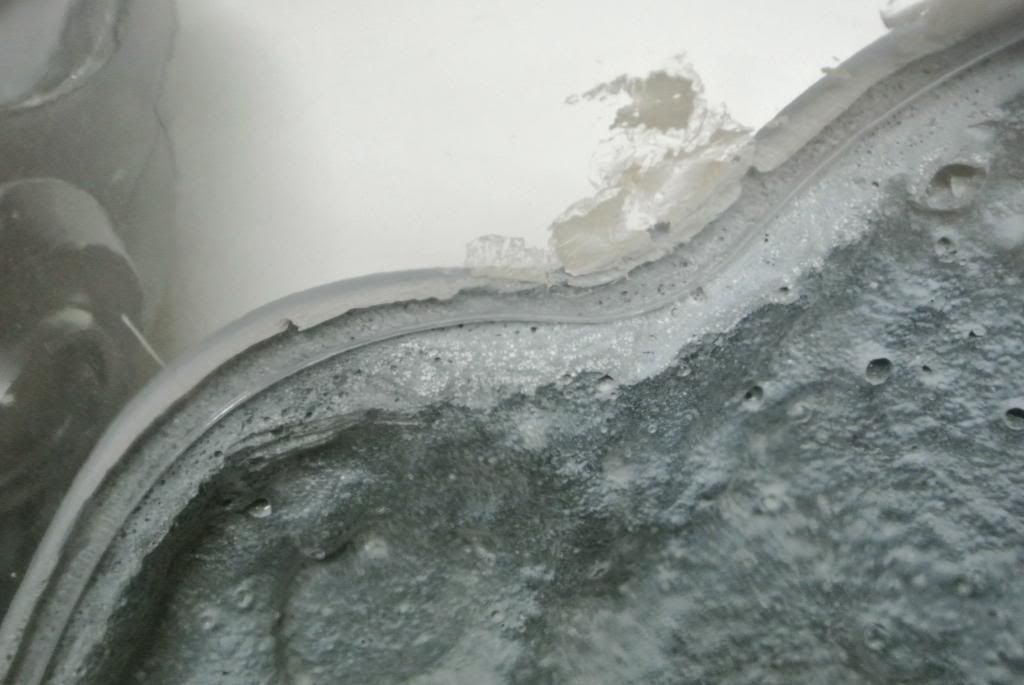
you can see here the channel cut just inside the edge of the helmet
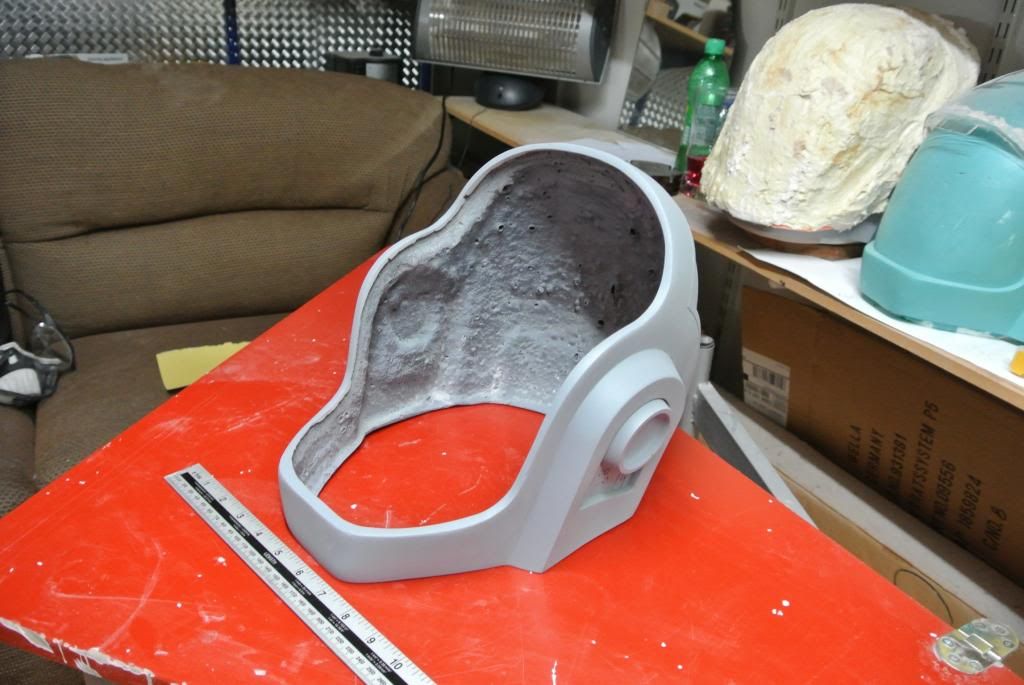
Once i had a nice fit it was time to dye the visors. I initially tried to dye the PETG before i formed them. Partially in an effort to avoid any chance of deformation should i have to put the visor into a pot for dying and partially to see if dyed PETg sheets would remain evenly tinted or would the colour ''stretch'' during forming. As it turned out i couldn't keep the tall thin dye bath i built for the sheets on any kind of heat so once the water cooled the dye stopped tinting the PETG. So in the end i had to vac form first and tint after.
For the dying process i used 2 packs of black RIT dye and filled this huge pot. The second round of tinting a 60/40 mix of 3 pack black RIT and 2 packs dark green RIT. More packs of dye definitely cuts down on the overall process time.
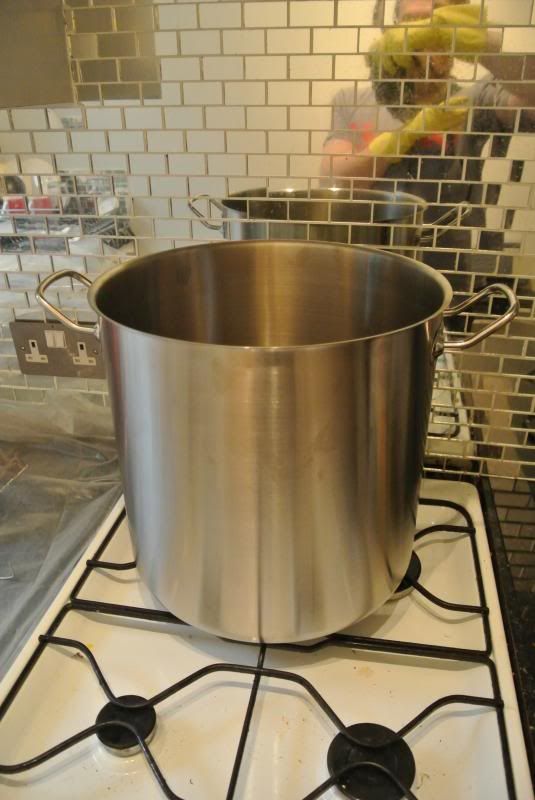
i did fashion a contraption from wife coat hangers in order to keep the visor off the ''hot'' sides of the pot but ultimately at the 140f i heated the pot to wasn't enough to deform or warp the PETG, so in the end i did away with it.
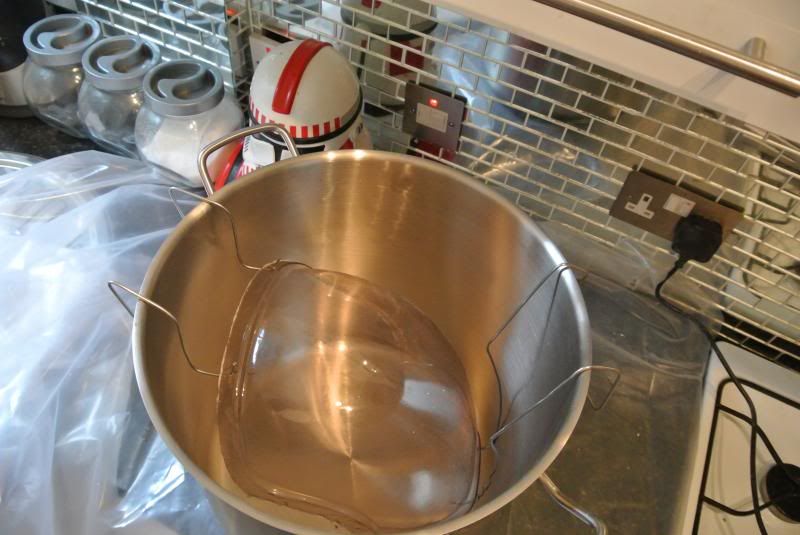
At the end of the day i was reasonably happy with my results although the visors still weren't quite dark enough and i knew i'd need to do a second round of tinting.
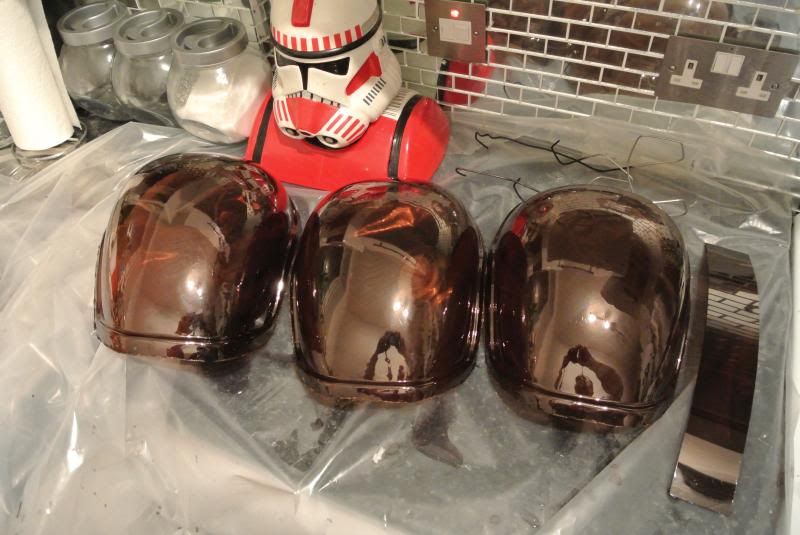
This is where things got interesting. i've been a hairdresser for over 20 years so my colour theory is pretty good and it helped a lot doing the visor tinting.I noticed i was getting an overall red hue to my visor from the black. This is because there is no real colour as ''black''. Black is a depth of shade and has no tone of its own. So where dye is concerned, black is just a mix of many colours mixed together until they are so dark that it looks black. Now reds are favoured for mixing black dye because the colour molecules in red dye are the smallest of all colour molecules and this allows them to penetrate the PETG first and therefore get a good tint going. The mix of warm colours that i'm guessing make up ''black'' RIT dye will add to the saturation of colour quicker because they aren't competing against each other in the dye. This is what caused the red hue. Normally that wouldn't be a problem but for anyone wanting to add lights to a DP helmet , they may find that the red hue in the visor works against the colour gels that are put in for the rainbow lights.
My fix for this was to retint the visors using dark green RIT dye added to my ''black'' RIT. Green is the opposite of red and the two colours cancel each other out. I used 60% ''black'' and 40%green RIt dye in the same pot to try and cancel out some of the warmth. I chose 60% black to err on the side of caution but i really would've been fine with 50/50 in the end.
I had 4 visors from the previous round of tinting and 3 fresh ones with no tint at all. I kept one of the previously tinted visors out of this batch to use as a control. Using the 60/40 mix took some of the red out of the previously tinted visors and gave a more neutral brown tint. The fresh visors worked great. Initially they appear to take longer to tint but what is actually happening is that the 60/40 mix in the first 3 dips or so is giving us a very light beige colour which can look a bit like it's not working, but it is. As you do more and more dips with the visor the saturation builds within the PETG and what you get is a dark brown that looks black instead of a dark red that looks black.Here's the colour wheel showing all colours and their opposites.
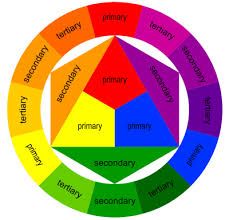
Here's the fresh visor on the right after a few dips compared to the control visor from the first round of tinting. You can see how the control visor on the left looks much warmer than the 60/40 tinted visor.
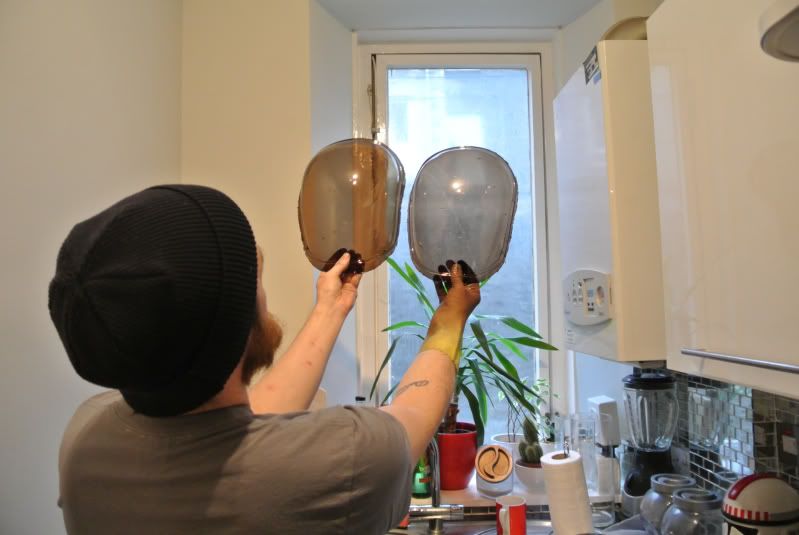
My process was heat the pot to 140f then take off the heat. Add the visor for 5 mins then plunge straight into a cold bath to set the colour then repeat till you get the desired look.
And here's what i ended up with
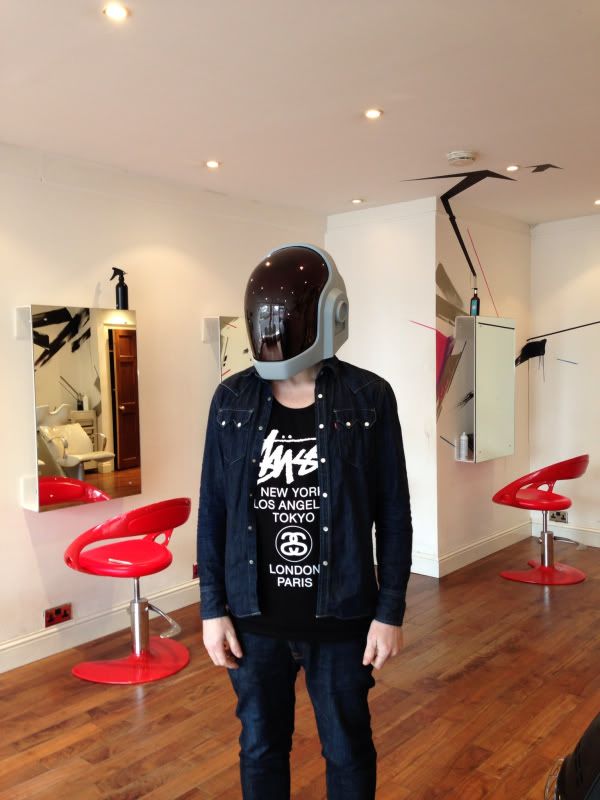
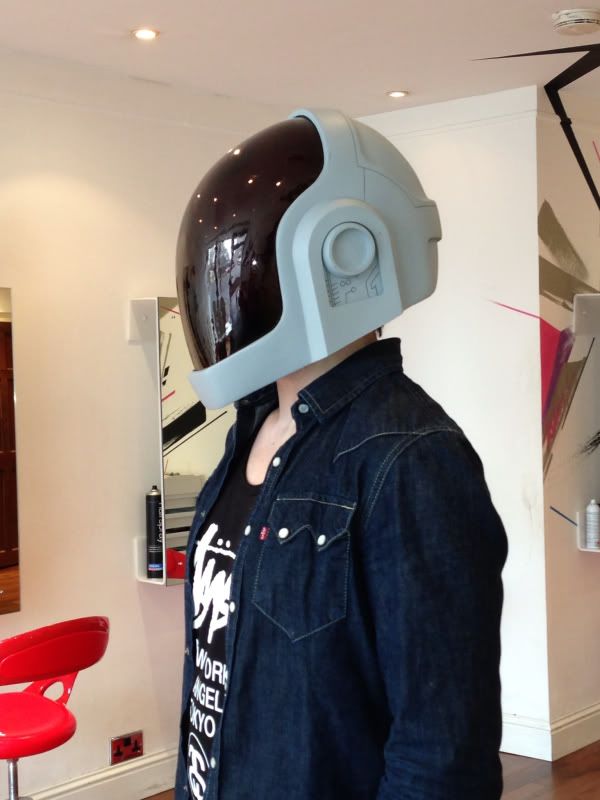
Thanks
